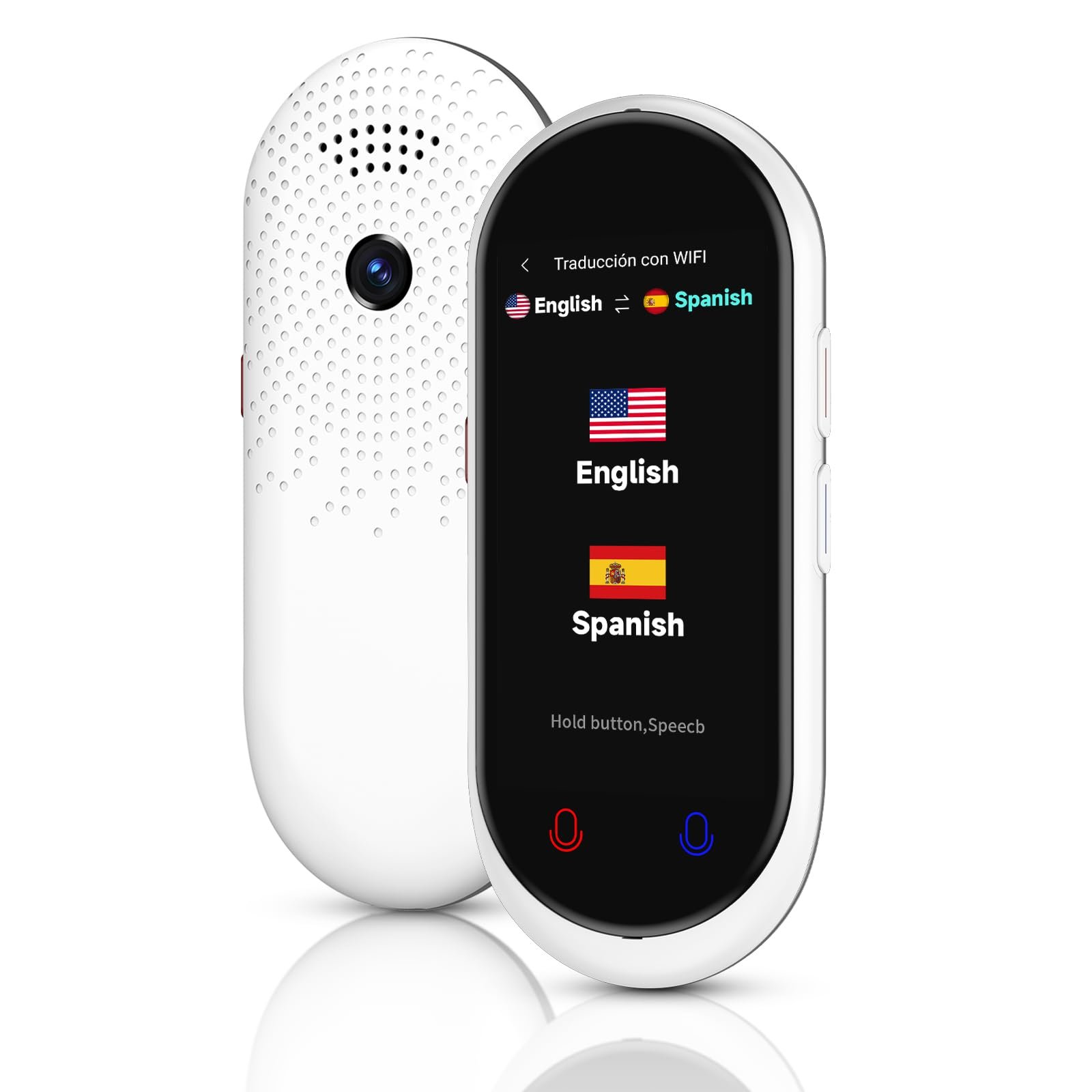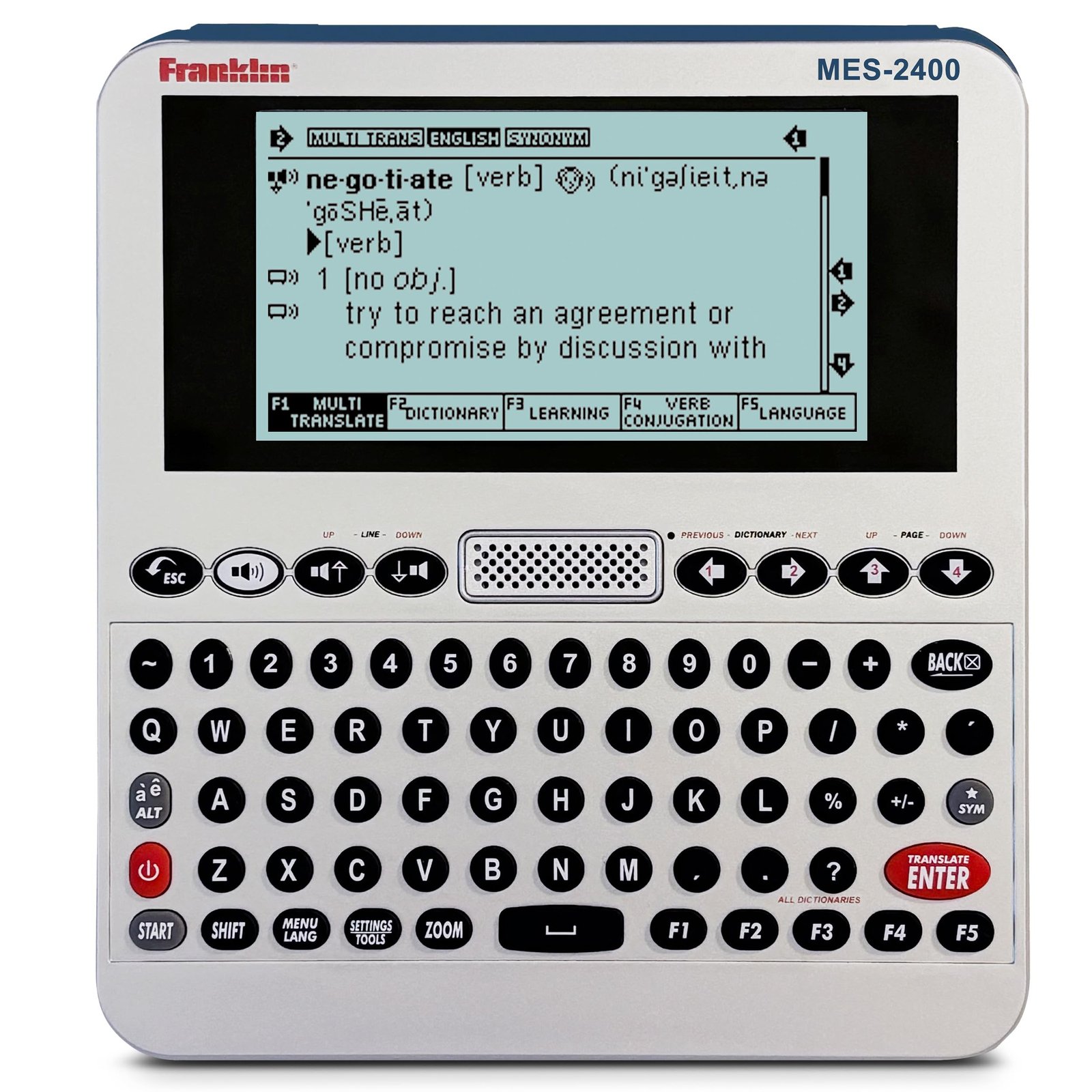Learning a new language can be exciting, but it can also be tough, especially for English as a Second Language (ESL) learners.
Technology has made this process easier with a range of devices designed to help you pick up a new language quickly and effectively.
These AI-based language learning devices use advanced algorithms to offer personalized lessons and instant feedback, making it easier for you to practice and improve your skills.
Different devices suit different learning styles, whether you prefer visual aids, speaking practice, or written exercises.
Some may focus on conversation skills, while others help with vocabulary and grammar.
Choosing the right device can enhance your learning experience and make it feel more enjoyable.
When looking for an AI-based language learning device, pay attention to features like user-friendliness, the range of languages offered, and how well the device adapts to your learning needs.
This way, you can find something that feels tailored just for you.
With so many options available, let’s explore six great AI-based language learning devices that can support your journey in mastering English.
Best AI-Based Language Learning Devices for ESL Learners
Check out this list of the best AI-based language learning devices for ESL learners.
These tools can help you practice and improve your language skills in a fun and engaging way.
Whether you’re just starting or looking to refine your abilities, there’s something here for everyone.
Super Support Workbook for ESL
This workbook is a solid choice if you’re looking for a beginner-friendly resource to help you or someone you know learn English.
- Easy to follow with structured lessons.
- Good for absolute beginners with little prior knowledge.
- Created by an experienced ESL teacher.
- Some lessons may feel too simple for older students.
- Examples might not always connect with adult learners.
- A few exercises can be outdated or confusing.
The “English Language Learning with Super Support: Beginners – Book 1” workbook aims to provide a straightforward and supportive way to learn English.
The lessons are designed to help you grasp the basics and build confidence.
Each section introduces new concepts in a simple manner, which is helpful for new learners.
Many users appreciate the workbook for its clear sequence.
It seems to focus on the essentials, making it easier to understand.
This can be particularly beneficial for those starting from scratch.
However, if you’re an adult learner, you might find some content a bit juvenile or not fully suited to your needs.
While the workbook shines in supporting beginners, it may require some adaptation for older students or specific learning goals.
Nevertheless, it serves as a strong foundational tool for English language acquisition.
PHILIMORE Language Translator
This device is a great choice if you want a handy translator that works both online and offline.
- Supports over 138 languages with fast translations.
- Great for travel with offline capabilities.
- Multiple functions like photo translation and voice recording.
- Limited to 16 offline languages.
- Some advanced features may take time to learn.
- Not as effective in noisy environments.
This translator is designed to break down language barriers.
With an accuracy rate of up to 98%, it can instantly translate conversations.
This quick response time makes it great for real-life situations, whether you’re ordering food or asking for directions.
The photo translation feature stands out.
It can handle text from menus or signs in 74 languages.
You can take a picture, and it will translate the text for you.
This makes it useful for travelers who need to read local labels or signs on the go.
Portability is another plus.
This device is lightweight and can last up to 8 hours on a single charge.
Whether you are traveling or in a business meeting, it’s easy to carry.
HASLED Language Translator
This device could be a great pick for you if you want an easy way to communicate in different languages.
- Supports instant translation in up to 137 languages.
- Compact and lightweight for easy travel.
- Long battery life of up to 8 hours.
- Offline support is limited to only 17 languages.
- Requires online access for the best accuracy.
- Some functions may be confusing at first.
The HASLED Language Translator is designed to help you talk to others across language barriers.
With two-way voice translation, it offers support for many languages, both online and offline.
You can chat with foreign friends without missing a beat, which is super helpful!
Its compact size means you can slip it in your pocket or bag, making it handy for travel.
Plus, the battery life is impressive, lasting up to 8 hours on a single charge.
It’s perfect for long days out exploring new places.
You’ll appreciate the camera feature for translating written text, like menus or signs, quickly.
However, remember that while it works offline, the best results come from its online capabilities.
This device is user-friendly with a simple interface, but it may take a little time to get used to all its functions.
Figurative Language and Other Literary Devices
This book is a solid choice if you’re looking to enhance your understanding of figurative language and literary devices, especially for grades 5-8.
- Offers clear explanations and examples.
- Engaging content that keeps learners interested.
- Great for improving both comprehension and creative writing skills.
- Limited pages may leave some topics under-explored.
- Geared primarily towards younger students; adults might find it basic.
- The paperback format can be less durable over time.
This book provides a straightforward approach to learning about figurative language.
Its layout makes it easy for ESL learners to follow along and grasp new concepts without feeling overwhelmed.
You’ll find various literary devices explained in a simple and engaging way.
The content is designed to capture the interest of younger readers, making it a fun reading experience that fosters a love for language.
Whether you’re studying for school or just looking to improve your skills, this book can be a helpful tool in your learning journey.
That said, the book’s brevity means that some topics may not be covered in depth.
If you’re a more advanced learner or an adult, you might find it too basic.
Regardless, it serves as a helpful resource for building a strong foundation in literary concepts.
Franklin MES-2400 Talking Dictionary
This handy device can help you improve your language skills with ease.
- Pronounces words and phrases in a natural voice.
- Works offline for multiple languages.
- Compact size makes it very portable.
- Lacks USB rechargeable feature.
- Batteries not included.
- Only one customer review available.
The Franklin MES-2400 Talking Dictionary is a great tool for those looking to enhance their English or any other of the supported languages.
It is designed with learners in mind, providing clear pronunciations that make it easier to understand and communicate better.
With its user-friendly interface, you can navigate through its features without getting distracted.
This device stands out with its ability to translate multiple languages offline.
Whether you’re in class or out and about, you can access translations in English, Spanish, Italian, German, and French without needing an internet connection.
This feature is especially useful for quick translations during a conversation or while reading something in another language.
When it comes to convenience, the Franklin MES-2400 really shines.
Its compact size means you can carry it in your pocket or backpack with ease.
This makes it perfect for students and language learners who are always on the go.
With this dictionary at your side, you’re never far from the help you need to master a new language.
Buying Guide
When choosing an AI language learning device, keep these features in mind:
Features to Consider
-
User Interface: Make sure it’s easy to navigate. You want something that doesn’t make learning feel like a chore.
-
Content Variety: Look for devices that offer different types of content like videos, quizzes, and games. Variety keeps learning fun and engaging.
-
Speech Recognition: Good speech recognition helps you practice your speaking skills and get instant feedback.
-
Customizability: You may want a device that allows you to set your own goals and track your progress.
-
Portability: If you want to learn on the go, consider the size and battery life of the device.
Price Range
| Price Range | Features |
|---|---|
| $50 – $100 | Basic functions, less content |
| $100 – $200 | More features, better apps |
| $200 and above | Advanced AI, personalized feedback |
Additional Tips
-
Read Reviews: Check what other users have to say about its effectiveness.
-
Trial Periods: If available, take advantage of trial periods to test out the device.
-
Support and Resources: See if the device comes with learning resources or community support.
Frequently Asked Questions
You might have some questions about AI language learning devices.
Here’s a simple guide to help you understand important points about these tools and their benefits for ESL learners.
What are the top AI tools currently used by ESL teachers?
Some popular AI tools used by ESL teachers include Rosetta Stone, Duolingo, and Babbel.
These platforms often provide personalized learning based on your skill level and pace.
They can help make learning more engaging and effective.
Which AI language learning apps are available for free?
Many apps offer free versions.
Duolingo and Busuu are good examples.
They provide essential features for learning without any cost, although paid options may unlock additional content.
How can AI devices improve English language skills for ESL learners?
AI devices can adapt to your learning style.
They offer instant feedback on pronunciation and grammar.
This helps you improve quickly and effectively by targeting areas where you need the most help.
What features should you look for in an AI-based English learning device?
When choosing a device, look for features like speech recognition, personalized lessons, and interactive exercises.
Good devices also allow for progress tracking, so you can see how you’re improving.
How can AI be integrated into English language teaching methodologies?
AI can be integrated by using it alongside traditional teaching methods.
For example, teachers can assign AI-based tasks to reinforce lessons.
This blend helps students get more practice in a fun and engaging way.
What does the term ‘generative AI’ mean in the context of language learning?
Generative AI refers to technology that can create new content, like writing prompts or conversation scenarios.
It helps students practice their language skills in real-life situations, enhancing their learning experience.






